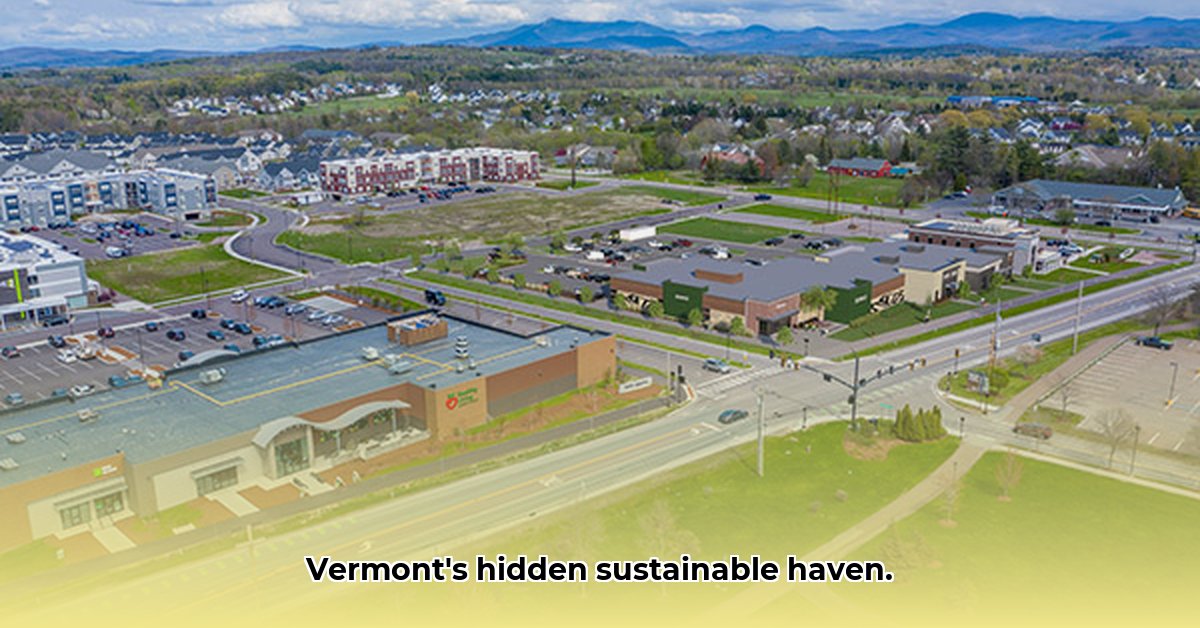
Finney Crossing VT: A Case Study in Sustainable Community Development
Finney Crossing, a residential development near Burlington, Vermont, presents a compelling case study in sustainable community living. This project attempts to minimize environmental impact while fostering a strong sense of community. This article analyzes its successes, challenges, and potential for broader replication, addressing questions of affordability, scalability, and long-term viability. We explore whether Finney Crossing serves as a viable model for future sustainable developments in Vermont and beyond.
Sustainable Features: Minimizing the Environmental Footprint
Finney Crossing's commitment to sustainability is evident in its design and construction. The development boasts LEED certification, a testament to its adherence to rigorous environmental performance standards. This translates into energy-efficient appliances, superior insulation, and a thoughtful design maximizing natural light and minimizing energy waste. A significant component of its strategy is the integration of renewable solar power, substantially reducing the community's carbon footprint. Finney Crossing claims to power 142 households with solar energy in 2024, a 66% increase from two years prior—a demonstrable commitment to green energy practices. But how does this translate to real-world impact? The equivalent CO2 offset is substantial, comparable to planting over 20,000 trees. This commitment to renewable energy sources is a crucial element of their sustainable living strategy.
Community Aspects: Fostering a Connected Lifestyle
Beyond its green building practices, Finney Crossing emphasizes community building. Its high-density design promotes walkability, placing amenities within easy reach. Dedicated community spaces encourage social interaction among residents, fostering a sense of belonging. This deliberate effort to minimize car reliance contributes further to the community’s reduced carbon footprint. This focus on walkability and community engagement is a key aspect of the development's appeal. It's a model that encourages a closer-knit community where residents can interact more readily, fostering a strong sense of belonging often lacking in larger, more dispersed developments. Isn't this kind of connection crucial to creating a thriving community?
Analysis of Successes & Challenges: A Balanced Perspective
While Finney Crossing's environmental achievements are undeniable, challenges remain. A significant concern is the cost of living. Rental rates, starting at approximately $1600 for a studio and $2100-$2250 for two-bedroom units, may be a barrier to entry for many potential residents. This raises questions about the accessibility of this sustainable living model to a wider range of income levels. Furthermore, the scalability of the Finney Crossing model remains uncertain. Can its design and principles be successfully replicated in larger developments or different geographic locations? This is a critical consideration for its long-term viability and impact. Long-term financial sustainability, both for individual residents and the development as a whole, is crucial for its future success.
Future Outlook: Replicating the Finney Crossing Model
The long-term success of Finney Crossing hinges on several factors, including ongoing monitoring of environmental performance, a thorough understanding of its economic and social impact within the Vermont context, and adapting to potential changes in regulations. Future research should focus on how successfully this model could be replicated in other areas, considering the unique geographic, economic and regulatory considerations of each location. The question remains: can Finney Crossing serve as a blueprint for creating more environmentally responsible communities nationwide? Careful consideration of financial models, community engagement strategies, and site selection will be crucial for any attempt at replication.
Conclusion: A Promising, Yet Imperfect, Model
Finney Crossing represents a significant step towards creating more sustainable communities. Its low carbon footprint and focus on community building are commendable achievements. However, affordability and scalability remain significant challenges that must be addressed to ensure its long-term viability and potential for wider adoption. Through a combination of sustainable design, community engagement, and careful financial planning, Finney Crossing offers valuable lessons for developers and policymakers seeking to create environmentally responsible and thriving communities. The question isn't whether such models are possible, but how we can refine and adapt them to make sustainable living more accessible for a broader population.